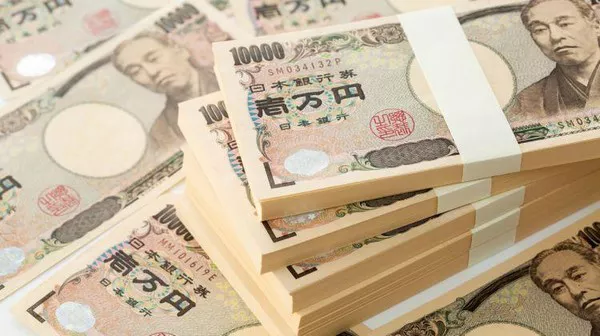The Yen weakened on Tuesday after the Bank of Japan (BOJ) maintained ultra-low interest rates but made a small tweak to its bond yield control policy, disappointing speculators who had expected more from the central bank as price pressures persist.
At the end of its two-day policy meeting, the BOJ said it would keep the 10-year government bond yield at the 0% level set under its yield curve control (YCC), but redefined 1.0% as a loose “ceiling” rather than a rigid cap.
It also removed a pledge to defend the level with offers to buy unlimited amounts of bonds.
Nonetheless, the yen slid nearly 0.7% against the dollar, crossing the 150 per dollar threshold to hit an intraday low of 150.12. It later pared some of those losses to stand at 149.95.
The euro also jumped about 0.5% against the yen following the decision. The single currency was last seen at 158.87 yen.
“It looks like the BOJ is slowly moving towards removing the YCC, so this is part of a series of moves for more flexibility as global yields remain elevated,” said Jeff Ng, head of Asia macro strategy at SMBC.
“Maybe markets were expecting more, or it could also be a (matter of) buy the rumor, sell the fact.”
A Nikkei report on Monday said the BOJ may allow 10-year Japanese government bond yields to rise above 1%, which had supported the yen ahead of the central bank’s policy announcement.
In other currencies, the greenback was broadly higher, with the Dollar Index last up 0.22% at 106.39.
While the index looked set to end the month largely unchanged, analysts say the dollar remains underpinned by the risks of another rate hike from the Federal Reserve, pointing to a still resilient U.S. economy.
“The Fed can still have the luxury of sounding hawkish in its outlook by emphasizing the ‘high for long’ narrative,” said Thierry Wizman, Macquarie’s global FX and rates strategist, of the Fed’s rate decision due on Wednesday.
“As long as that’s still the case, and as long as the U.S. economy is showing more robustness in its official data than the rest of the world, the euro, sterling, yen and Australian dollar will have a hard time appreciating against the U.S. dollar.”
The euro looked set to reverse two straight months of losses with a slight 0.2% gain for October, with the single currency last down 0.18% at $1.0595.
Data on Monday showed German inflation eased markedly in October, while a separate report showed Europe’s largest economy shrank slightly in the third quarter.
Spain’s 12-month inflation rate was unchanged at 3.5% in October from the previous month, preliminary data also showed on Monday.
The figures come ahead of euro zone inflation data due later on Tuesday.
The British pound fell 0.18% to $1.2146 and was on track to lose nearly 0.5% for the month ahead of a Bank of England interest rate decision later in the week, where the central bank is expected to remain on hold.
Elsewhere, the Australian dollar fell 0.35% to $0.6351 and was headed for a loss of more than 1% for the month.
The New Zealand dollar lost 0.22% to $0.5831 and was on track for a near 3% loss for October, pressured by fragile global risk sentiment and as a surprisingly low reading on domestic inflation in the third quarter reduced the chances of another rate hike.

























